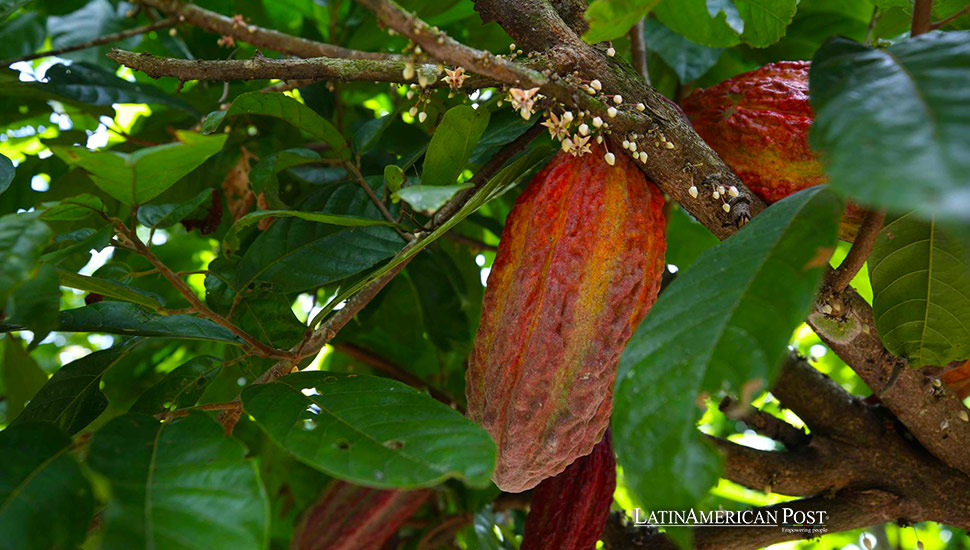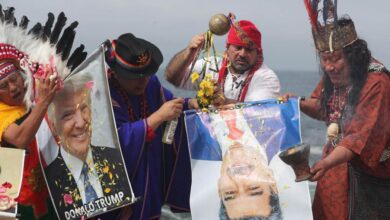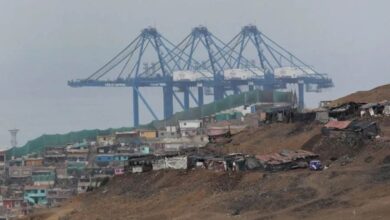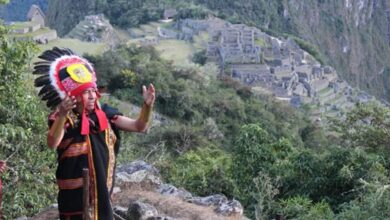Record High Cocoa Prices Drive Sustainable Farming in Peru’s Amazon

In the Peruvian Amazon, farmers are transforming former coca fields into thriving cocoa plantations, motivated by record-high prices. A rural school teaches eco-friendly techniques to boost productivity and sustainability, ensuring a brighter future for the region.
In a remote corner of the Peruvian Amazon, where once the violent presence of Shining Path and the Tupac Amaru Revolutionary Movement (MRTA) reigned, tranquility has returned, bringing the promise of agricultural renewal. This transformation is most evident in the district of Pajarillo, located in the San Martín department, where former coca fields are now flourishing cocoa plantations. The unprecedented rise in cocoa prices has given local farmers a compelling incentive to improve their yields through sustainable practices.
The National Institute of Biodiversity (Inabio) has highlighted how the highest recorded prices for cocoa have spurred farmers to expand their harvests. The PERU-Hub project, a crucial initiative by the National Agrarian University La Molina and the U.S. Agency for International Development (USAID), plays a pivotal role in this transformation. It supports a field school that teaches farmers ecological techniques to enhance their crops on soils once dominated by coca plantations.
Every day, cocoa producers, like Milton Coronel Campos, arrive at the school on motorcycles or motorized tricycles, ready to learn under the shade of a large peliperro tree. They eagerly absorb knowledge to boost their productivity and safeguard their livelihoods. Milton, a cocoa farmer, reflects on the journey: “We faced significant declines due to pests and diseases. Two years ago, many of us considered abandoning our fields. But with today’s prices, production is much better,” he remarks with satisfaction.
The rural school combines theoretical and practical lessons over eight months, meeting twice a month. The curriculum emphasizes that applying the learned techniques to their fields is the key to success. During a class break, Roy Ríos, an extension specialist with the project, explains that low productivity has traditionally plagued cocoa farming due to pest infestations and low market prices.
“Most farmers were abandoning their fields,” Ríos notes. “But this initiative helped them realize that they could significantly improve their quality of life with proper management and knowledge. Initially, they had to rehabilitate their neglected farms. With the right knowledge, they implemented cultural management practices and fertilization, boosting productivity. With current prices, they’re smiling from ear to ear.”
According to the Association of Exporters (ADEX), Peruvian cocoa bean exports reached a value of $78 million in the first quarter of 2024, marking a 108.4% increase over the same period the previous year.
A Transformative Educational Experience
Currently, cocoa sells at a record high of $10,000 per ton, the highest in history. This remarkable price surge has prompted farmers of all ages to take the school seriously. Janet Coronel, who owns a small cocoa field, shares that she has been attending classes for two months and is keen to learn how to better care for her trees due to the high value of the crop.
“We are learning how to control pests, cultivate the plants, and improve production to increase our income daily,” Janet says under the scorching sun. Ríos emphasizes that these are not traditional classes but participatory sessions where farmers share their knowledge and experiences, with a strong focus on practical application.
The training, a beacon of hope that emphasizes sustainable agricultural practices and increased income, offers more than immediate financial relief. It equips farmers with the transformative tools to maintain their crops long-term, expand their businesses, and secure a better future. Janet Coronel, a single mother of a disabled child, dreams of producing chocolate to generate higher profits and improve her quality of life in her later years.
The success of these initiatives transforms individual farmers’ lives and contributes to the region’s broader economic and social revitalization. This transition from coca to cocoa farming symbolizes a wider shift towards sustainable development and away from the cycles of violence and instability that once plagued the Peruvian Amazon.
The Historical Context of Cocoa Farming in Latin America
Cocoa has a rich historical legacy in Latin America, dating back to the ancient civilizations of the Mayans and Aztecs, who revered the cacao bean as a gift from the gods. In recent history, cocoa has become a significant agricultural product, particularly in Peru, Ecuador, and Colombia. However, the journey has been challenging, with the rise of coca cultivation in the latter part of the 20th century, fueled by the global drug trade, overshadowing traditional crops.
However, the journey has been challenging. The rise of coca cultivation in the latter part of the 20th century, fueled by the global drug trade, overshadowed traditional crops. In regions like the Peruvian Amazon, the presence of militant groups further complicated the agricultural landscape. The shift from coca to cocoa represents a reclamation of land and livelihoods, aligning with global efforts to combat the illicit drug trade and promote sustainable agriculture.
The involvement of international organizations such as USAID underscores the global importance of sustainable agriculture. These partnerships provide local farmers with essential resources, knowledge, and financial support, enabling them to transition to more profitable and sustainable crops.
The success of the PERU-Hub project, a testament to the power of international collaboration, illustrates the global impact of sustainable agriculture. By fostering education and sustainable practices, these initiatives help to stabilize regions formerly dependent on illicit crops and pave the way for economic growth and environmental conservation. This is not just a local success story, but a global effort towards a more sustainable future.
The Future of Cocoa Farming in Peru
As Peru continues to solidify its position as a major cocoa producer, the focus on sustainability and quality remains paramount. The high global demand for cocoa, driven by the increasing popularity of chocolate and other cocoa-based products, presents a lucrative opportunity for Peruvian farmers. By adopting eco-friendly practices, farmers can ensure that their crops meet international standards, securing better prices and market access.
Moreover, the growing awareness of cocoa production’s social and environmental impacts is encouraging more consumers to support ethically sourced products. This trend bodes well for Peruvian farmers committed to sustainable farming practices, as it opens up new markets and enhances the value of their produce.
The record-high prices of cocoa have provided a much-needed boost to farmers in the Peruvian Amazon, transforming former coca fields into thriving cocoa plantations. Through the innovative field school supported by the PERU-Hub project, farmers are learning sustainable techniques that promise to improve their current yields and ensure the long-term viability of their crops.
Also read: Peru’s Bold Initiatives to Protect Its Biodiverse Landscapes
This transition from coca to cocoa is more than an economic shift; it is a testament to the resilience and determination of the local farmers. With continued support and education, these farmers are paving the way for a brighter future that prioritizes sustainability, quality, and the well-being of their communities.
The story of Peru’s cocoa farmers is a powerful example of how targeted interventions and international cooperation can lead to profound positive change. As these farmers continue to thrive, they contribute to the broader narrative of sustainable development in Latin America, demonstrating the potential for agriculture to drive economic growth and social stability.





